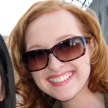More and more adults are experiencing acne - 11 possible causes of pimples
There are often hormonal or diet issues behind adult acne.
Acne only belongs to teens - and bad. An increasing number of adults know that pimples may not go away with age. The number of adult acne has increased significantly in recent years, says the Health Library. About 5 percent of women over the age of 40 also have acne symptoms.
Today, there is a fairly common perception among dermatologists that the “acne age” has shifted to a later stage, especially in women. Although the majority still have acne before they turn 30, today it cannot be promised without hesitation, dermatologist Håkan Granlund told Good Health magazine.
According to the American Academy of Dermatology, dermatologists are not entirely sure what causes the increase in adult acne. The ultimate reason why one gets acne and another doesn’t is still a mystery to researchers, even though some new research has been done on the subject.
However, there are numerous different possible causes for pimples. We listed 11 causes that can cause adult acne to break out and get worse.
1. Changes in contraception
The causes of adult acne are often hormonal, meaning they are found in changes in the body’s hormonal balance. According to the Health Library, the main reason for the increase in adult acne is hormonal contraception.
Unsuitable hormone coils or birth control pills can cause acne. Stopping hormonal contraception can also trigger acne. Typically, adult acne breaks out in a woman who stops taking e-pills after years of use.
2. Stress
Severe stress can affect the body’s hormones. Studies have found that stress can increase the risk of adult acne. Prolonged sleep deprivation and other sleep problems can also cause the skin to respond.
3. Menopause
Not all women experience symptoms of menopause, but for some, a change in hormonal function between the ages of 40 and 60 causes acne. Menopause causes a variety of other symptoms as well. You can read more about them via the link below.
4. Power carbons
Studies have not been able to detect that any single food would cause acne. The connection between diet and acne seems to be quite individual. Your observations can help you figure out if a food is causing you pimples.
Acne is most strongly affected by the glycemic load of the diet, which is lifted by the high carbon and, in general, by the abundant amount of carbohydrates. Glycemic load is increased by, for example, sweets, sugar mussels, white bread and pasta, and potatoes.
However, there is no need for a total sugar and carbon strike. Nutritionist Reijo Laatikainen previously told Me, Women, that a couple of potatoes, a little chocolate, and candy a day does not increase the glycemic load. The most important thing is the whole.
5. Dairy products
Dairy products may make some acne worse. If you suspect that your acne is getting worse from dairy products, initially exclude them from your diet for eight weeks. During that time, replace dairy products with herbal preparations. Remember, experimentation is of no use if it slips out often.
If you want to read more about the effects of diet on acne, we recommend reading more on the subject via the link below.
6. Smoking
Rowing does no good to any part of the human body. Smoking is linked to adult acne, as belching impairs the surface blood circulation of the skin, increasing the body’s susceptibility to inflammation.
7. Medicines
Some medications are linked to the onset of acne. For example, oral cortisone medications, as well as sedatives and psychiatric medications, can cause acne.
8. Too strong cleaning agents
Acne is a congenital disease. Its roots are therefore not to be found, for example, in careless cleansing of the skin or in the wrong products. However, some skin cleansing habits and cosmetics can make the symptoms worse.
Acne skin should be cleansed in the morning and evening with a gentle cleanser so that skin oils, air pollution and other dirt do not clog the pores. Washing too much with hard detergents should be forgotten.
It is not advisable for an adult to use cleansers for oily, young skin to clean acne skin, as adult acne skin is often basically dry. SKY specialist cosmetologist Maarit Leikoski said earlier in Me Naisten's story that many people start treating acne skin with products that are far too dry .
“Dry skin gives the sebaceous glands a signal to produce even more oil, which only makes the problem worse,” he said.
When choosing a cleaning product, you should pay attention to the pH of the product. The closer the pH of the product is to the pH of the skin, the better the skin's moisture balance is maintained. The pH of healthy skin is about 4.5 to 5.
9. Strict product testing
In addition to unnecessarily powerful products, it is not advisable to use a particularly large product arsenal for acne skin. Testing and varying several different products can make your skin worse off balance. Too much exfoliation can also cause the skin to react with pimples.
10. Wrong makeup products
Makeup can be used on acne skin. However, certain cosmetic ingredients may need to be avoided as they can clog pores. Such ingredients are called comedogenic. For example, cocoa butter, mineral oils, and synthetic lanolin can make acne worse.
11. Unnoticed bacterial colonies
The more bacteria that cause inflammation in the pores of the skin, the worse the acne can get. Therefore, you should change your pillowcase and towel regularly, for example. Some people also tend to touch the skin on their face unnoticed, allowing bacteria to pass through their hands.
About the Creator
Sarfraz Hussain
I am a professional journalist and I work as a writer and reporter in a national newspaper. The purpose of my life is to help people. Useful Tips on Health Care to Improve the Lives of an Ordinary Man.






Comments
There are no comments for this story
Be the first to respond and start the conversation.